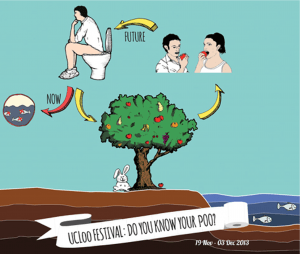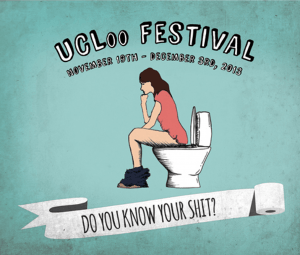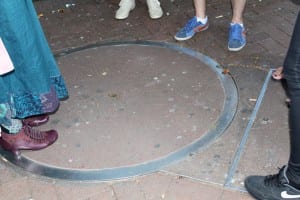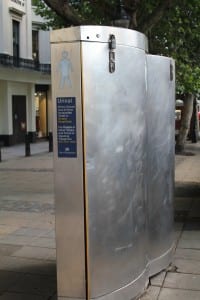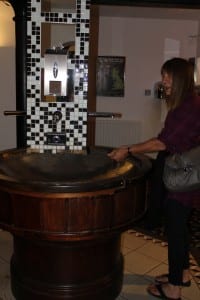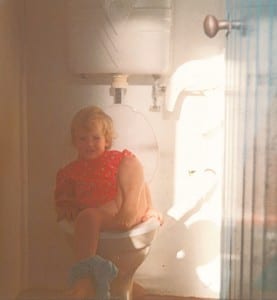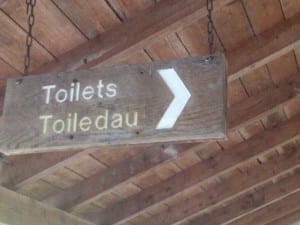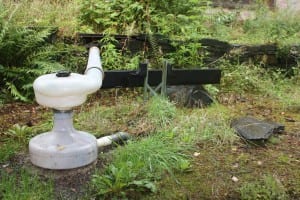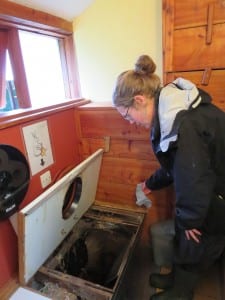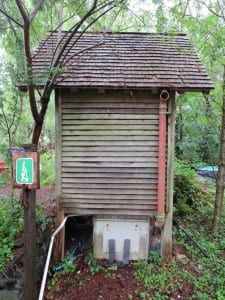Last year, I got a call asking if I wanted to build infrastructure for a thousand hippies at a festival in the desert [1]. Of course I said yes. I was offered a selection of projects, but the idea of building the least romantic items on a site filled with sparkly-eyed astrologers, plus the many opportunities to play with power tools, appealed to me; so Toilet Lead I became.
The festival [Nowhere: http://www.goingnowhere.org/] is hard to describe. A relative of the Burning Man festival in Nevada, it brings together about a thousand people in the remote Los Monegros region of Spain, to build from nothing a commerce-free, self-reliant community of artists that flowers for a week before being returned to pristine wilderness. All that you need you bring with you; water comes in cubes, food in tins, and waste is taken away with you afterwards. A harsh environment packed with revellers might sound challenging for toilet construction, but, just as armies march on their stomachs, festivals scrape along on their bottoms; which is where I and toilet crew come in.

The site before the festival gets rolling: mostly dust and dramatic scenery.
The sanitary arrangements we have been using up until now are simple and compost-based (they are in need of a redesign; read on for why): basically boxes seated atop deep holes. As they get used, scoops of dust are tipped in, to ensure a balance of solids and liquids suitable for the ‘humanure’ to break down. This covers up faecal matter, hopefully preventing insects from touching down in the waste, and also, happily, smells.
I got together at a carpenter’s workshop in Hackney with our head builder, Monkey; some carpenters who knew what they were doing and a sanitary technician, to design a better, stronger, easier-to-build free-standing toilet cubicle. The bloom-and-bust nature of the festival means that many of our structures are based on the flat-pack, turning sheets of plywood into structures that will withstand the depredations of over-excited festivalgoers. In practical terms, this meant slicing a lot of squares and rectangles with newly-acquired circular saw skills, and jigsawing even more notches to interlock them.
Both myself and Monkey are rock and roll fiends, so there was no name for our toilet model but ‘Elvis’, although naming the various parts of the design did give some difficulty. Key base struts were clearly Jerry Lee Lewis and Chuck Berry (though, thinking about it, we did miss the opportunity to call one the ‘stray cat’); the particularly annoying one to cut was dubbed Millie Small, after the helium-pitched, lisping sugar-addict of the period. Finally, we had a working model; now to make 13 more.
Fast forward to July and I took a series of buses out to the nearest town to the festival, arrived a week before the hedonistic hordes and got building. I buttonholed a couple of woodworkers, some people keen to learn about power tools and some skilled in measuring, marking out and obsessive checking. Then my dedicated team and I laboured for a week in the heat and sawdust and whirring of machinery to churn out 13 brand new ply poop palaces. Interposed with duties such as digging trenches to stop storms flooding out sewage – a picture which, once it had been vividly explained, proved quite motivating – and trying to pry the finished items out from under the brushes of the artists enthusiastically decorating them so they could be deployed around the site, we finished this Herculean task and let the incoming sparkleponies at the Augean stables.
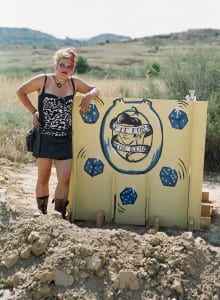
Me with the Elvis toilet, designed, built and decorated by myself: with much help from my talented friends.
And then, among the acro-balance workshops, storytime sessions and dance-offs, some people started getting diarrhea, vomiting, and other intestinal distress. It spread. In this semiarid region, where water is a precious resource, cooking is done in field kitchens, toilets are rough and ready, and people are in holiday festival mood: there are plenty of opportunities for disease to get around.
Following the event, professional epidemiologists (you get all sorts of specialists at these festivals) studied the outbreak, and found evidence that at least some sickness was caused by Shigella sonnei bacteria. This virulent gastro-intestinal disease can require only 10-100 bacterial cells to spread further, with cells being shed by infected parties for up to 4 weeks afterwards. Together, this meant that despite copious amounts of sanitizing spray, regular bleach spray-downs, and the skilled attentions of the medical staff on site, many people were ill during and after the festival.
It’s likely that there were a number of causes of sickness on site. However, poorly washed hands and insects were very likely carriers of infected cells to new victims. Yes, that’s infected cells shed from someone else’s intestinal lining into diarrhea, and then getting in people’s mouths. While faecal-oral transmitted disease is officially gross, everyone did recover and was eventually OK.
We were relatively rich, privileged Bohemians living temporarily low-tech with hand-crafted compost toilets, and we learnt the hard way that sanitation is crucial. When things went wrong, we tried our best attempts to contain it, to provide copious bottles of sanitizer, to isolate sufferers, to block up every chink a fly could get through; but we still couldn’t stop it. We were lucky with the excellent Cruz Roja on site, and the healthcare in our home countries. We were lucky that we were already healthy, well-nourished, and had the clean water we needed while recovering.
Many people aren’t so lucky: they build for themselves and their communities and support themselves in the way we play at doing, but they don’t have an established sewer system to come home to, or gallons of potable water to throw down it.
We are treating this sickness outbreak as the close call it is, and looking at ways we can step up our sanitation. We need a system people can use hygienically, no matter how much they have enjoyed themselves recently; that insects cannot enter and spread infection from; that can tolerate the spectacular storms; and that can be removed and allow the environment to gracefully return to how it was before we came out. That’s for our short-term event.
The world needs a new toilet made for modern populations, not Victorian Britons. We all deserve safe sanitation, and even from my few weeks in the desert I learnt water is precious. Sanitation is fundamental. It is within the grasp of engineers, designers and people with plain old good ideas to do it; but we need to accept it’s a problem, and get working. It doesn’t get simpler than that.
*Please donate to UCLoo Festival – just £5 or less will help – to make sure this conversation happens: http://spacehive.com/ucloofestival2013 But hurry – there’s only one week left to reach our fundraising target!
[1] Technically it’s not a true desert, due to having rainfall. It’s a semidesert. But it has typical temperatures in the mid-thirties, pushing into forties; it’s dry, starkly beautiful, and dusty as hell, so most people stretch the term.
 Close
Close







